Layout and construction of a one-story foam block house
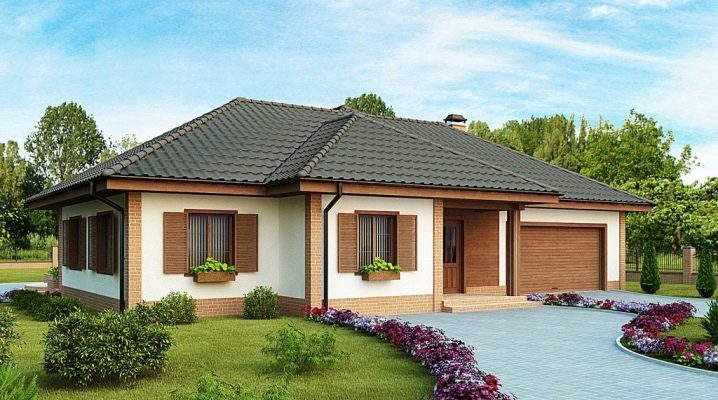
Many people choose a material such as a foam block for building a private house. With its help, you can build buildings of various types - from simple to non-standard. Today we will analyze how to properly plan and build a foam block house with one floor.
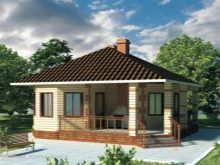

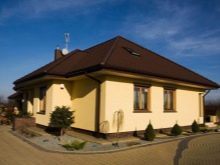
Material features
If you have decided to build a foam block house, then you should take into account some of its features. For example, a distinctive feature of foam concrete is that it has a porous structure. This feature affects many characteristics of the material.
Also, this material has good thermal insulation qualities. Quite cozy and warm houses are obtained from foam blocks. Of course, a lot also depends on how the master laid the blocks. If there are large joints between the individual elements or there is a thick layer of mortar, this will lead to the appearance of cold bridges. This feature must be taken into account if you are going to independently build a one-story dwelling from foam concrete.
Do not confuse the foam block and the gas block. These are different materials that differ not only in their characteristics, but also in the manufacturing technology. They are easy to distinguish from each other even in appearance - foam concrete blocks have a smooth surface, and aerated concrete blocks have a rough surface.
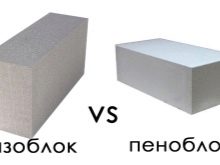
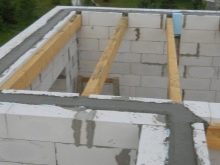
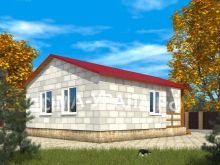
It should be noted that in the modern market you can find a huge number of low-quality foam concrete blocks that were made in artisanal conditions. As a rule, such products are manufactured in violation of technology, therefore, they are of dubious quality. The spread of second-rate materials is explained by the fact that foam concrete is made from simple and affordable raw materials. It is possible to make such a material even in a garage.
If you decide to build a house from foam concrete, then you need to take into account another important feature of it. It consists in the fact that foam blocks usually do not have ideal geometry. Because of this, during the installation process, they often have to be leveled. Otherwise, the walls of your home may turn out to be uneven.
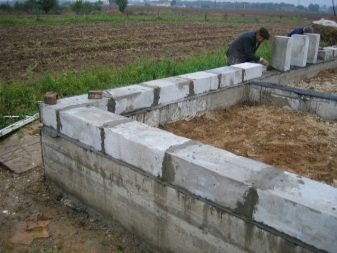
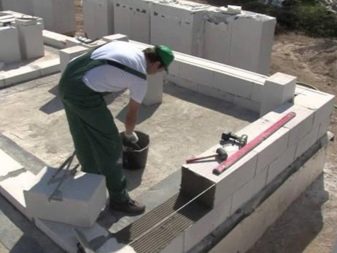
This building material is very popular and widespread today. The relevance of foam blocks is due to the many advantages they have.
Let's get acquainted with them.
- Foam concrete blocks boast a very low thermal conductivity. Thanks to this quality, quite warm and hospitable dwellings are obtained from foam blocks, in which a very comfortable microclimate takes place.
- Foam blocks are not afraid of frost and low temperatures.
- Such products are of modest weight. Because of this, working with blocks is quite simple - a lot of effort / energy of the master is not expended, and moving material from place to place does not create problems.
- Due to their democratic weight, these materials do not exert strong loads in relation to the foundation. Of course, this does not mean that for such houses it is not required to prepare strong foundations - such work will be needed in any case.
- Since foam blocks have a cellular structure, they have a beneficial effect on the process of natural air exchange in the living space. It is pleasant and comfortable to be in such an environment.
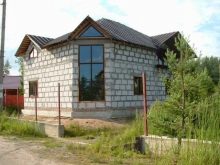
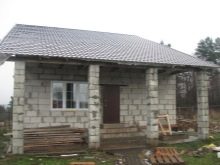
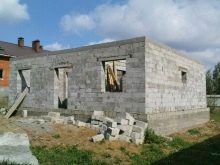
- The advantages of foam blocks include their high soundproofing characteristics.Thanks to such qualities, in block houses, annoying noise from the outside is not heard.
- Foam concrete blocks are also good because they can be used for the construction of a variety of structures. For example, it can be an outbuilding, a gazebo, a fence, or even an original flower bed in a summer cottage / garden plot.
- Foam blocks have a large volume. Houses are built quickly from this material.
- Many craftsmen and builders are attracted by the fact that foam concrete is a non-capricious material. It can be trimmed or cut off an extra piece if necessary. And for this you do not have to purchase special expensive tools - an ordinary hacksaw or saw will be enough.
- It should be noted that foam concrete is recognized as a safe material. It does not harm the health of builders and households either during the work or after their completion. Yes, in the process of creating such blocks, synthetic components are involved, but their percentage is so small that it does not affect the environmental friendliness of the product in any way.
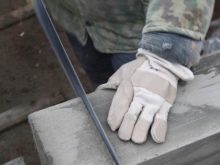
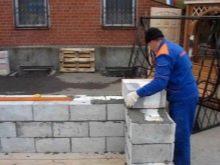

- The foam block is a durable material, therefore, houses from it are durable.
- Consumers choose foam blocks because of their fire safety.
- Foam block houses differ in that they do not require mandatory finishing. Usually, these works are addressed in order to give the structure an aesthetic and attractive appearance, nothing more.
- Many users mistakenly believe that only a very simple and inconspicuous house with a template design can be built from foam blocks. In fact, this is not the case. If you connect imagination and the appropriate specialists, then you can get a very original and bright building, which will definitely not be left unattended.
- Foam blocks do not lose their positive qualities, even after many years.

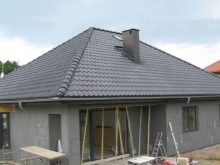
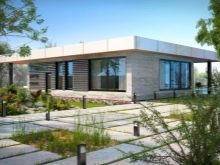
It is impossible not to take into account a number of disadvantages characteristic of foam concrete blocks.
Let's consider them in detail.
- As mentioned earlier, foam blocks have a porous structure, which is both a plus and a minus. Because of this feature, the blocks are fragile, so you need to work with them more carefully, as well as transport them.
- Unfortunately, these materials are characterized by strong moisture absorption, which negatively affects their qualities.
- It is also necessary to take into account the fact that foam blocks give considerable shrinkage. First of all, this applies to buildings made of autoclave-type material.
- It has already been indicated above that foam concrete houses do not have to be finished. However, unfinished buildings usually look rather gloomy and boring. Of course, you can give them a more aesthetic appearance, but for this you will have to purchase special finishing materials designed specifically for the foam block.
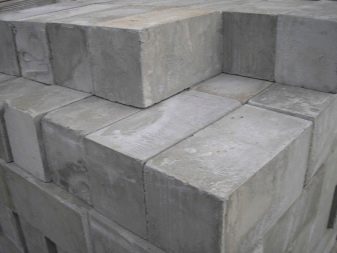
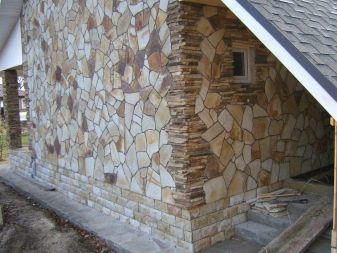
- For foam blocks, it is not recommended to use simple fasteners, since they are not very securely held in such bases. You will have to buy special fasteners.
- Houses made of foam blocks will definitely need to be reinforced. Most often, the reinforcement is installed where the openings of the building are located. If you do not take up the reinforcement of foam concrete, then you simply will not get sufficiently strong and reliable floors.
- Do not forget that today there are too many low-quality blocks, so you need to choose them very carefully so as not to run into a bad product.
- Foam concrete blocks cannot boast of good and correct geometry, which is why, during the laying process, these materials often have to be additionally leveled in order to obtain normal overlaps.
- These materials do not have a good load-bearing capacity.
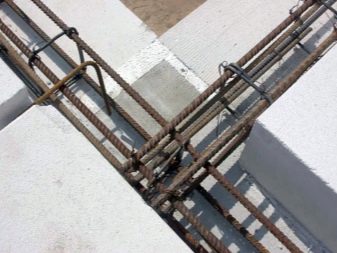
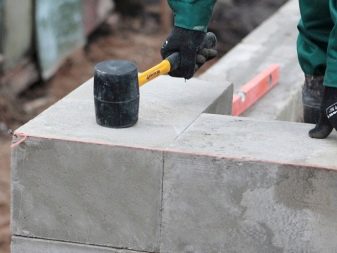
Blueprints
The construction of any house begins with a competent drawing up of a project and a detailed drawing indicating all the constituent details of the future building. It is during the design of a dwelling that its layout is developed. Consider several attractive projects of one-story foam block houses.
If you want to build a small house in the country, then you will like the project of a neat structure 7x9 m:
- it can be built on a strip-monolithic foundation;
- for external walls, it is permissible to use a combination of foam blocks and aerated blocks;
- floors are made of reinforced concrete;
- for a simple gable roof, metal tiles are suitable.

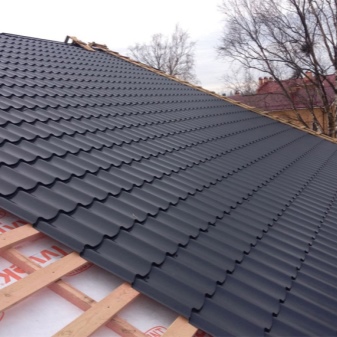
Conventionally, such a building can be divided into two halves. On the left side there is room for a small bedroom of 9 sq. m. Directly in front of it should be placed a more spacious hall, combined with a kitchen located on the right side of the dwelling (this area will take 23.7 sq. m.). Behind the kitchen on the right, you need to allocate a small space for the boiler room (2.5 sq. M).
The last room on this side will be a combined bathroom of 2.9 sq. m. The area near the front door and the door leading to the backyard should be continued with small hallways of 4.1 and 3.1 sq. m (for the back door). In such conditions, it is quite possible to equip the attic.
As for the exterior, light materials, complemented by brickwork and wooden elements, are suitable here.
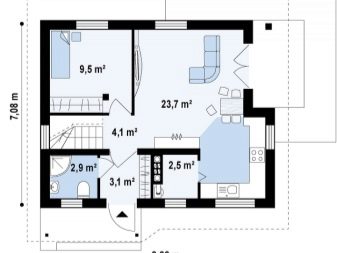

Also today, many people order projects of foam block houses, the dimensions of which are 8x8 m.As a rule, two-story buildings have such parameters, but this does not mean that they cannot be used for one-story houses.
So, in a building measuring 8x8 m there is a place for such rooms:
- most of it should be reserved for a spacious living room combined with a kitchen (28.60 sq. m);
- in front of the hall and kitchen, set aside a place for the hall leading from the entrance to the back door (15.4 sq. m) to divide the building into two halves;
- on the right side of the hall there is a place for a bedroom or a guest room (13 sq. m.), a small bathroom (5.8 sq. m.), as well as a dressing room (7.20 sq. m.) located in the corner of the building.
Such a house can be supplemented with a neat summer terrace, on which households can relax in hot weather. It can be positioned along the wall. In this case, the width of the terrace will be 3-4 m.
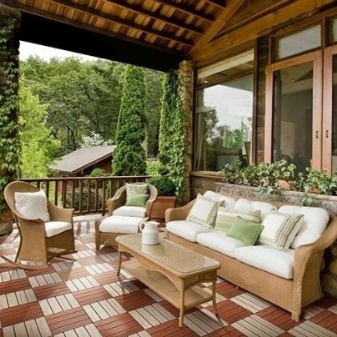
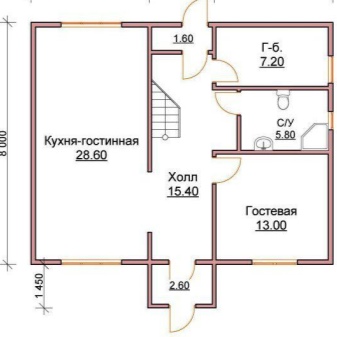
A foam block house with dimensions of 8 by 10 m can turn out to be successful.
Let us consider in detail what premises (and what area) can be located in such conditions:
- a neat terrace can be organized at the entrance to the house;
- the first room following the terrace will be a vestibule (2.7 sq. m), which turns into a hall (3.42 sq. m);
- on the left side of the vestibule and hall, place a bathroom (6.3 sq. m);
- on the right side, organize a comfortable living room (20.56 sq. m);
- immediately behind the living room, you can equip a small kitchen (11.2 sq. m);
- opposite the kitchen (on the opposite side - on the left), allocate an area for a bedroom (10.6 sq. m).
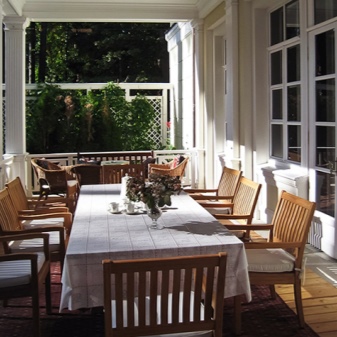
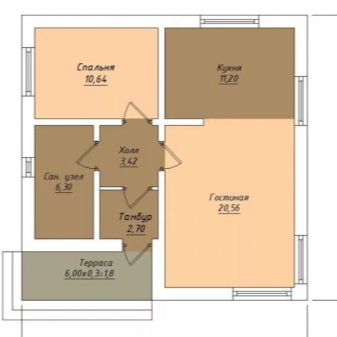
If you are planning to build a small block house with dimensions of 6x8 m, then you should consider the following project.
- such a house can be as simple as possible;
- place the hall in the right corner of the dwelling;
- equip a small bathroom in front of the hall, which will conditionally separate the entrance of the house and the bedroom, located in the corner on the right side;
- opposite the indicated rooms, place a large living room, separated by a partition from the kitchen.
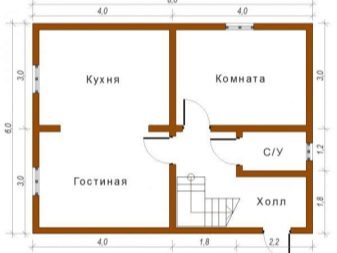
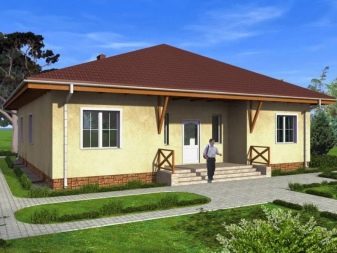
A block house with a size of 9x9 m will turn out to be more spacious.
Below we will consider how to arrange all the necessary rooms in such a structure:
- divide by a small hall the kitchen on the right (8.9 sq. m) and the bathroom on the left (toilet - 2.8 sq. m, bathroom - 3.6 sq. m);
- set aside the remaining space for a spacious hall and a dining area (34.8 sq. m), in the corner, install a staircase leading to the attic;
- in the attic place a study (8 or 11 sq. m), behind the wall from it a bedroom (14 sq. m), and after the bedroom there is another study (12.1 sq. m), located in the corner;
- place the bathroom on the left side of the second office (8.7 sq. m);
- organize a small balcony with an exit from the first study.
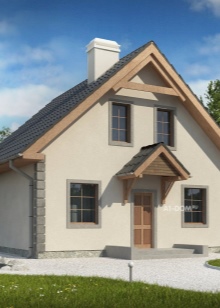

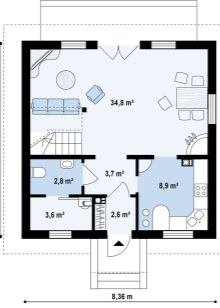
In a similar way, you can equip a more spacious house of 9x10 or 10x10 m, such a structure can be supplemented with a garage, separated by a partition from the boiler room.In the remaining area, it will be possible to arrange all the standard rooms.
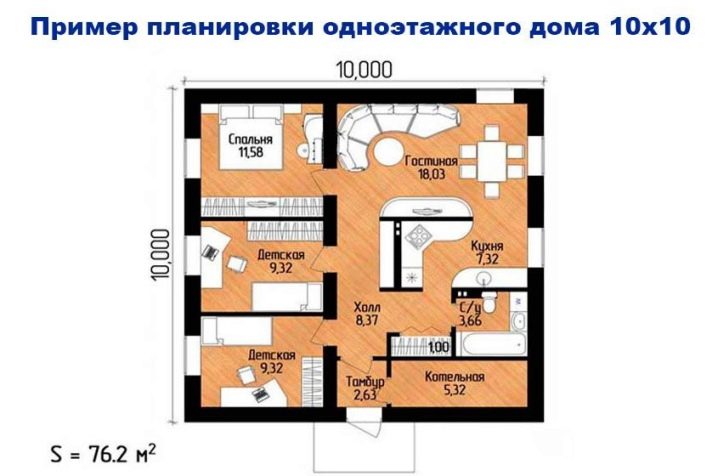
The above house designs are the most popular. Of course, more spacious dwellings of 100, 150 (and more) square meters can be built from foam blocks.
Choosing a foundation
A foam block house, like any other building, must be built on a high-quality and reliable foundation. The manufacture of such a basis should be started only after the geodetic division of the axes on the site. This must be done in accordance with the project data. When choosing one or another foundation for a foam block structure, you need to take into account the level of groundwater, the exact type of soil and the level of its freezing.
Some people refuse this stage, because such a detailed study of the site can cost a tidy sum. The type of soil and the level of groundwater can be determined independently by pulling out a well with a depth of 2-3 m, however, it will be too difficult to identify the correct calculation of the loads that will be transferred to the foundation - entrust such work to professionals.


Most often, in cases where groundwater is located at a depth not exceeding 2 m, a strong and reliable monolith is chosen. If the depth exceeds the aforementioned mark, the soil does not differ in heaving, and the freezing point does not reach 1 m, then it is permissible to make foundations of a small deepening, for example, tape options.
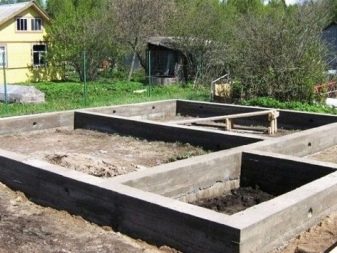

Construction process
A foam block one-story house can be built with your own hands. To do this, you need to strictly follow the instructions. Let's get acquainted with it.
First thing you need to do is build a foundation. He plays one of the most important roles in the construction of any house. It can be built not only by an experienced master, but also by the owner of the home.
Let's consider how to do this correctly using the example of a tape structure, which can be used in the construction of a foam block house:
- first you need to make accurate markings, for this purpose they dig trenches of the required width and depth;
- at the bottom of the trench, a "pillow" of sand and gravel is laid, the thickness of which can be from 15 to 20 cm;
- after that, formwork is constructed from boards (you can also use non-removable polystyrene foam formwork), the thickness of which should be about 5 cm, place the spacers in such a way that there are meter gaps between them;
- making the formwork, engage in the installation of reinforcing bars;
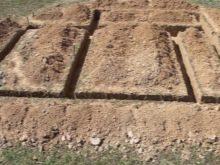
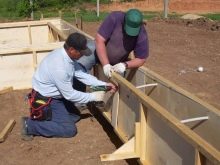
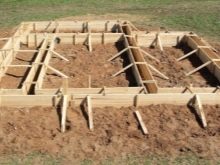
- do not start pouring concrete until you wet the boards with water;
- place concrete gradually, compacting each layer with vibration;
- after completing the listed steps, the foundation must be covered with sawdust or woven material;
- now remove the formwork and proceed with waterproofing the structure using the appropriate materials.
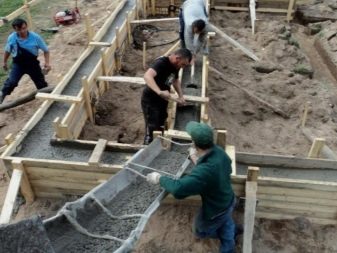
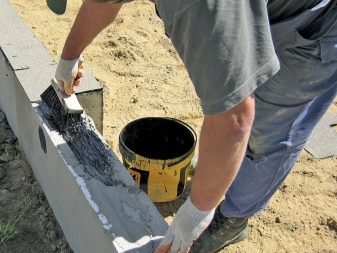
When you finish pouring the foundation, you need to wait until it gains strength. This may take a month or more.
Then you can start laying the walls.
- Place waterproofing materials on the base. This will be needed so that the moisture tending from the soil does not collide with the foam blocks and does not disperse along the entire plane of the walls. For this, sheets of roofing material must be laid on a small liquid layer of cement mortar.
- Next, a corner block is placed on the solution. The first part must be correctly aligned with a mallet and a level. The block must be positioned horizontally (this applies to all planes).
- The first to equip the corners of the house. They must be lifted to a height of 4-5 blocks. The openings resulting from such work must be laid with foam blocks in the future.
- If it is necessary to make holes or recesses in the blocks for communication elements, then it will not be difficult to make them due to the pliability of foam concrete.
- Having laid out and correctly oriented the starting row, you should proceed to the further laying of walls and partitions in accordance with the project plan.
- Each subsequent row of blocks must be done with reference to the previous one.
- Supplement the supporting structures with an armored belt.
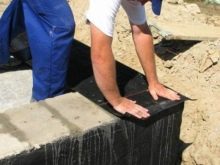
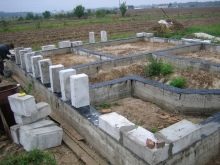
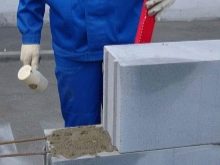
- For the arrangement of jumpers, ready-made parts of the corresponding shape are usually used.
- The attic floor is laid in the same way as the interfloor structures in houses with two or more floors. But keep in mind that the plates cannot be laid directly on the foam blocks. For this, a cast monolithic armo-belt made of concrete is usually used. Overlappings are laid on such a base.
- When designing an attic space, it is permissible to use structures made of wooden or metal beams.
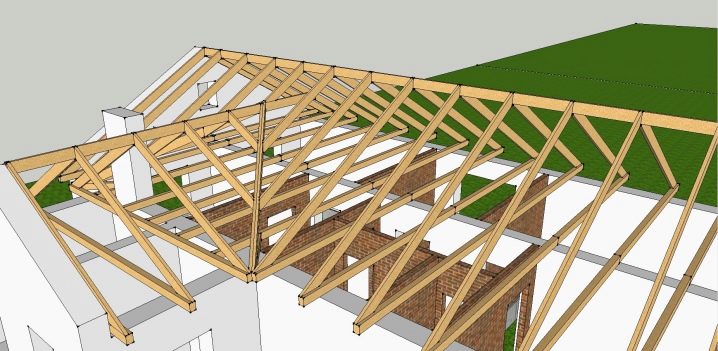
After laying the foam block walls, you should proceed to the construction of the roof.
This is done in this order:
- first, the rafter beams are mounted;
- then such elements as counter-lattice and lathing are assembled;
- then the heat-insulating material is laid;
- the next step is to lay the roofing.
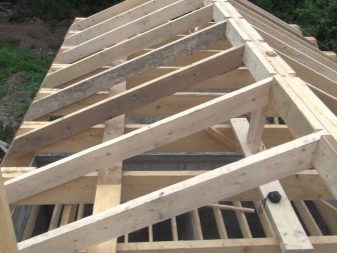
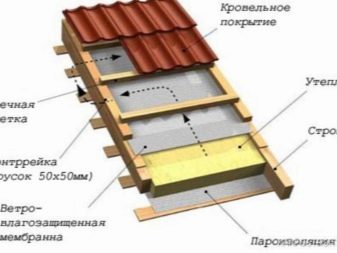
Only after completing all of the above work, you can proceed to the interior decoration of the resulting foam block dwelling. Conventional plaster mixes are not recommended to be applied to aerated concrete, as it absorbs moisture. Most often, such mixtures are applied to plasterboard or plastic substrates with pre-designed frames (metal or wood).
If we are talking about finishing the bathroom and kitchen, then here you will need to lay vapor barrier materials. Only after that, gypsum fiber sheets can be installed on the walls, on which the tiles will be glued in the future.
In a foam concrete house, you can lay the following floors:
- wooden;
- laminate;
- linoleum;
- porcelain stoneware / ceramic tiles;
- self-leveling floor.
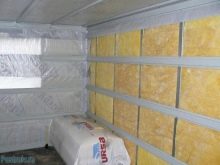
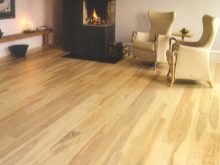
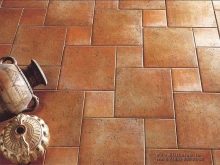
Beautiful examples
From the foam block, you can get a neat and cozy house with external walls finished with white facade material and masonry. The hipped roof can be finished with maroon tiles. Doors and windows made of dark wood will look harmonious in such a structure.

A one-story block house with a dark gable roof and light outer walls, complemented by wooden panels near the front door and on supports under the protruding part of the roof, will look beautiful. Snow-white window frames made of wood or plastic are perfectly combined with such a background.
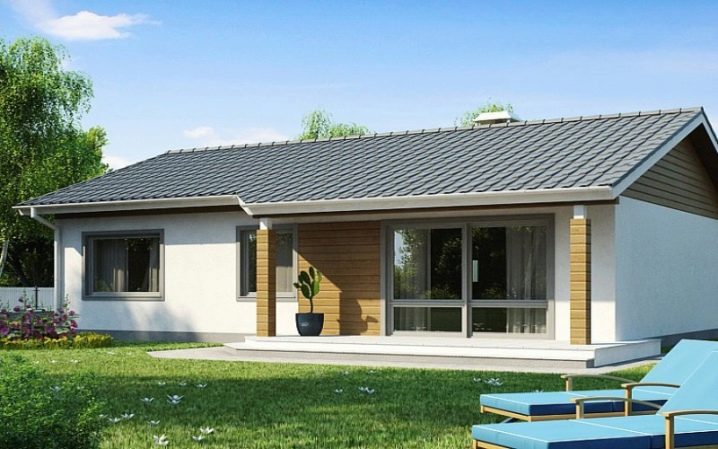
A block house with a dark brown hipped roof, a large terrace with columns, brick / stonework on the walls and windows with black frames will turn out to be chic. The terrace can be fenced off with a forged black fence, and arched partitions can be built between the columns.

For information on how to build a house from foam blocks with your own hands, see the next video.













The comment was sent successfully.